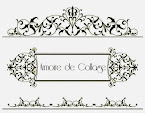Monday, December 5, 2011
All That Glitters
All that glitters may not be gold, but it can be every bit as beautiful. Brilliant over-the-top rhinestone jewelry is back in vogue as the result of the term ‘bling.’ The ultimate in ‘bling’ things is vintage costume jewelry from the early half of the last century. The term ‘rhinestones’ was used because the stones were originally rock crystals collected from the Rhine River. Georg Friederich Strass, an Alsatian jeweler, conceived the idea to imitate diamonds by coating the back side of the glass with metal powder in 1775. These manmade stones were blown glass, often colored, with foil backing that increased the reflective quality to enhance their brilliance.
Rhinestones differ from what is referred to as ‘paste,’ which was ground glass that was molded and melted, then polished and faceted. Paste stones resulted in a brilliant stone that did not require the foil backing due to the high lead content, but it was labor-intensive. In 1891, Daniel Swarovski invented a glass-cutting machine in Austria, which enabled rhinestones to be mass-produced with consistently high quality, and then produced a foil-application process thus eliminating the hand labor entirely. Swarovski rhinestones now dominate the market.
Rhinestone jewelry peaked during the Great Depression (1929-1939) as fine jewelry with precious stones, was no longer affordable. The early years of the Golden Age of Hollywood showcased paste and rhinestone jewelry magnificently as the jewelry had to be ‘over-the-top’ to be seen on the big screen. The movies were largely instrumental in popularizing flamboyant costume jewelry; one excellent example was “Auntie Mame” starring Rosalind Russell. It remained a popular accessory into the 1950s, when in 1953, a metallic coating produced an iridescent effect termed ‘aurora borealis,’ also invented by Swarovski. If a little is good, a lot was better. Women wanted matching pieces and would wear complete parures which consisted of four or more matching pieces that included earrings, necklace, bracelet, and brooch. Quite often just one piece of the parure might bear the mark, so if the pieces were separated over the years, the provenance was lost. Sometimes these matching sets, were often packaged in gift boxes bearing the name of the costume jewelry manufacturer, so the individual jewelry pieces were not stamped, much to the dismay of today’s costume jewelry collector.
Unfortunately the counter-culture movement of the 1960s saw a decline in opulence and materialism, resulting in a decline of showy costume jewelry. It wasn’t until the Disco Era with it’s mirrored-ball and flashy attire, that it experienced a resurgence in popularity. No well-dressed Las Vegas or Country & Western entertainer would be on seen on stage without bearing some bling. Rhinestones have become a mainstay on C&W attire, and fashionistas no longer reserve it for evening wear. One blinding piece of bling is enough to make a fashion statement on a woman’s business suit. Don’t just save it for the holidays. Bring out your bling!
Subscribe to:
Post Comments (Atom)




No comments:
Post a Comment